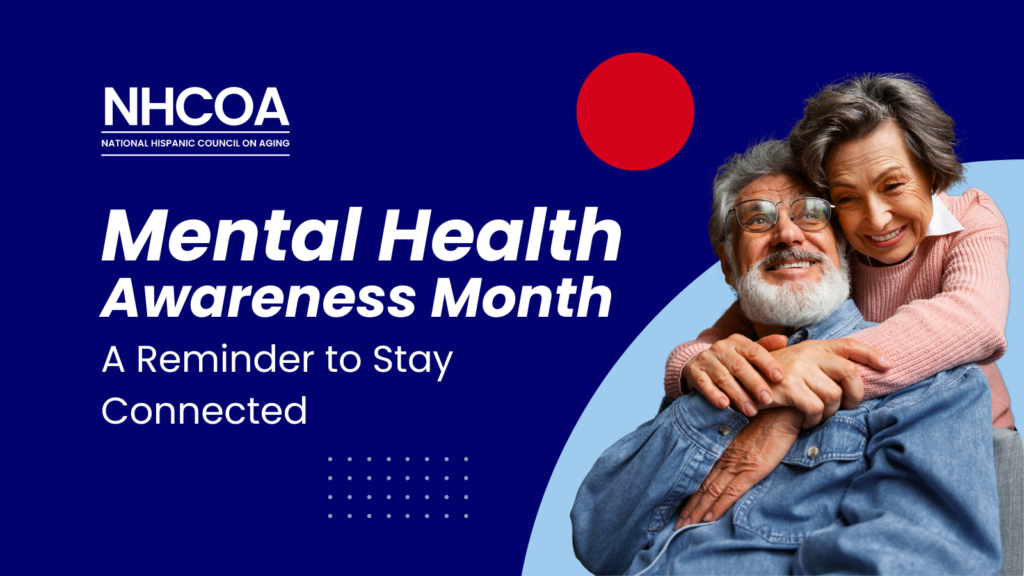
May is Mental Health Awareness Month, and while it’s important we always keep our mental health in mind, this month gives us the opportunity to give it special attention. What steps are we as individuals taking to ensure that we are happy and healthy? Are we experiencing greater degrees of loneliness or social isolation? How can we take easy and convenient steps to stay connected with our communities, families, and friends?
Why are social isolation and loneliness a big deal?
In recent years, and especially since the COVID-19 pandemic, social isolation and loneliness have become prevalent across the United States. We’re far more educated and aware of the dangers of sickness, and how isolation and social distancing can keep us safe from severe illness. And make no mistake, it’s good that we’re taking precautions for our health, but we also have to remember that it doesn’t stop with our physical health.
In fact, social isolation and loneliness have been linked to a heightened risk for a variety of conditions and diseases:
- High blood pressure
- Heart disease
- Obesity
- Weakened immune function
- Anxiety
- Depression
- Cognitive decline
- Dementia
- Alzheimer’s disease
Older Adults have also been identified as one of the demographics most at risk for social isolation and loneliness. Due to certain limiting factors like living alone, being less physically able, living far away from family, and language barriers, older adults face a heavier burden in avoiding the cognitive decline and physical illness that can come with social isolation and loneliness.
What steps can we take to avoid feeling lonely or isolated?
It may sound simple or obvious, but the best ways to avoid social isolation and loneliness, will involve staying connected with your friends, family, or community. Independent activities can be rewarding, but they lack the kind of stimulation and connection that helps eliminate social isolation and loneliness, and all the risks that come with them.
There are many ways to find connection with others, including:
⦿ Routine Phone or Video Calls: It can be hard to catch our loved ones at a moment’s notice for a phone call, facetime, or videocall. Setting a routine is an easy way to account for your different schedules, by picking a day and time to regularly check-in.
⦿ In-person or Online Classes: Finding a hobby or interest that you want to learn more about is a great way to connect. You’ll find people with similar interests, who may be discovering this new activity at the same time, have useful tips to offer, or even be looking for new connections too.
⦿ Faith Based Communities: Whatever religion or denomination you may subscribe to, there are likely houses of worship or meetings happening near you. They’re likely to be full of people who are eager to engage in spirituality and conversation with like-minded others.
⦿ Outside Physical Activity: It can be as simple as taking a walk through the park, or around the block. Having a reason to regularly leave our homes without an errand or obligation can help us feel more connected to the world around us, even it’s just our neighborhoods.
Finding opportunities may feel daunting, especially if you’re not accustomed to searching the internet. If that’s the case for you, look to public facilities like public libraries, recreational centers, and senior centers. There are usually places where community organizations and events will post flyers, advertising their groups, programs, and more.
Sources:
“Loneliness and Social Isolation,” Health Topics. The National Institute on Aging. https://www.nia.nih.gov/health/loneliness-and-social-isolation/loneliness-and-social-isolation-tips-staying-connected
“Social Isolation and Loneliness,” Demographic Change and Healthy Ageing, Social Determinants of Health. The World Health Organization. https://www.who.int/teams/social-determinants-of-health/demographic-change-and-healthy-ageing/social-isolation-and-loneliness
“Social Connectedness,” Well-Being Home. Centers for Disease Control and Prevention. https://www.cdc.gov/emotional-wellbeing/social-connectedness/loneliness.htm

Recent Comments